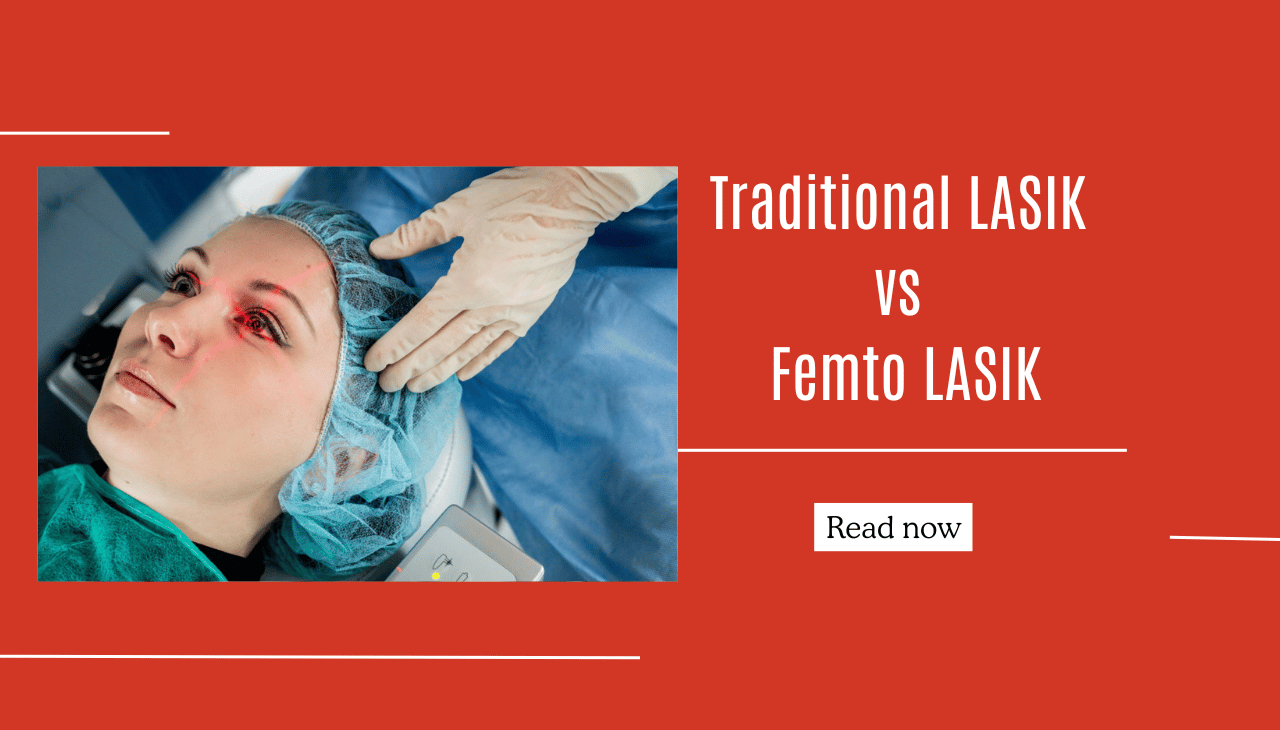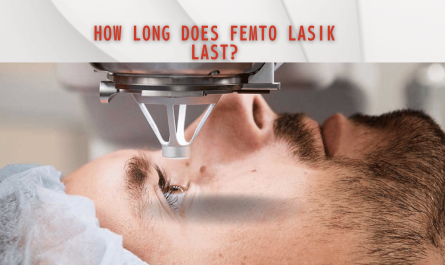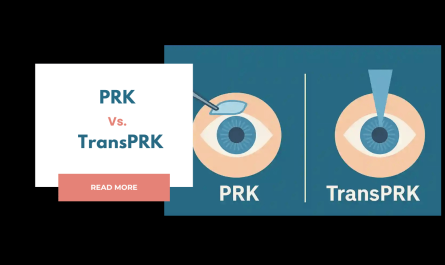Introduction:
Laser eye surgery has revolutionized the way people correct their vision, offering a life-changing solution for those with refractive errors like nearsightedness, farsightedness, and astigmatism. Among the various techniques available, two popular options stand out: Traditional LASIK and Femto LASIK. While both procedures aim to improve vision, they employ different methodologies. Let us get into the details of these two techniques, comparing their procedures, benefits, and considerations to help you make an informed decision about which might be the right choice for your vision correction needs.
Traditional LASIK
Traditional LASIK, or conventional LASIK, has been around since the 1990s and has helped millions of people achieve clearer vision. The technique involves creating a thin flap in the cornea using a microkeratome, a mechanical surgical tool. Once the flap is created, a laser is used to reshape the underlying corneal tissue to correct the refractive error. Finally, the flap is repositioned, where it naturally adheres back into place.
Pros of Traditional LASIK
- Proven Track Record: Traditional LASIK has decades of clinical data supporting its safety and efficacy.
- Quick Recovery: Many patients experience rapid visual recovery, with improved vision within a day or two after the procedure.
- Cost: Traditional LASIK tends to be less expensive than Femto LASIK, making it a more accessible option for some patients.
Cons of Traditional LASIK
- Flap Complications: Since the flap is created with a microkeratome, there is a small risk of flap-related complications such as flap dislocation or irregular flap creation.
- Thin Flap Creation: The thickness of the flap created with a microkeratome may vary, potentially affecting the stability of the cornea post-surgery.
- Limited Precision: The use of a mechanical blade in creating the corneal flap may result in less precise flap dimensions compared to Femto LASIK.
Femto LASIK

Femto LASIK, also known as bladeless LASIK or all-laser LASIK, is a more advanced form of laser eye surgery that utilizes femtosecond laser technology to create the corneal flap instead of a mechanical microkeratome.
Pros of Femto LASIK
- Enhanced Precision: Femto LASIK offers greater precision in flap creation, leading to more predictable outcomes and potentially reducing the risk of complications.
- Customization: The femtosecond laser allows for the creation of customizable flap dimensions, catering to the unique characteristics of each patient’s eyes.
- Reduced Risk of Flap Complications: Femto LASIK eliminates the need for a mechanical blade, which may lower the risk of flap-related complications compared to Traditional LASIK.
Cons of Femto LASIK
- Cost: Femto LASIK typically comes with a higher price compared to Traditional LASIK due to the advanced technology involved.
- Longer Procedure Time: The femtosecond laser adds time to the overall procedure compared to Traditional LASIK.
- Potential for Dry Eye: Some patients may experience temporary dry eye symptoms after Femto LASIK, although this is typically transient and resolves over time.
Choosing the Right Option
When deciding between Traditional LASIK and Femto LASIK, it’s important to consider factors such as your budget, your eye health, and your personal preferences. While Traditional LASIK may be suitable for those seeking a more affordable option with a proven track record. Femto LASIK offers enhanced precision and customization, which may be appealing to those willing to invest in the latest technology for their vision correction.
Conclusion
Both Traditional LASIK and Femto LASIK are effective procedures for correcting refractive errors and can significantly improve the quality of life for many individuals. By understanding the differences between these two techniques and weighing the pros and cons. You can make a wise decision about which approach aligns best with your vision correction goals.
Ensure the health of your eyes with regular eye exams, early detection, and expert consultation at Laxmi Eye Hospital. If you or someone you care about is at risk, book an appointment today for professional care and treatment.




